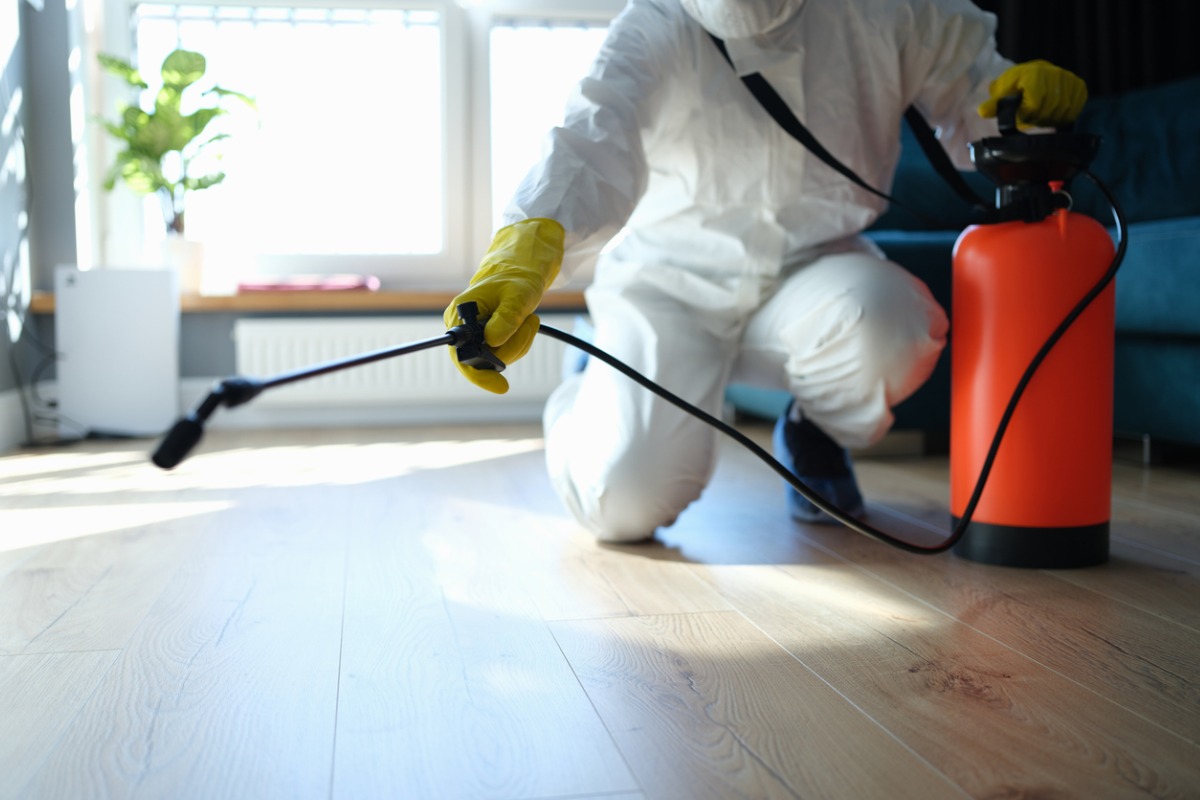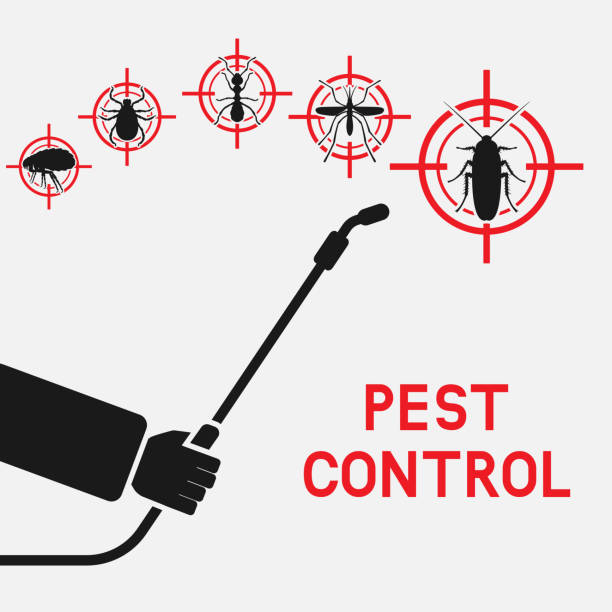Exploring Problem and Therapy Strategies in the World of Insect Control
The landscape of bug control incorporates a myriad of obstacles, specifically as infestations of usual home pests continue to evolve. Understanding the actions and reproductive patterns of these problems is critical for establishing reliable therapy strategies. By integrating preventative measures with innovative management techniques, such as Integrated Bug Administration (IPM), home owners can much better secure their settings. However, the performance of these methods might differ dramatically based on specific conditions. What hidden elements contribute to the success or failure of these techniques in different setups?

Typical House Pests
When it involves managing our living spaces, understanding usual house bugs is essential. These pests not only interrupt our comfort but can additionally present health dangers and damages residential property. The most prevalent household bugs consist of ants, roaches, rodents, termites, and bed bugs.
Ants, typically seen foraging in cooking areas, can contaminate food and establish huge nests. Roaches, recognized for their durability, can activate allergic reactions and spread pathogens. Rodents, consisting of mice and rats, can create structural damage and carry diseases like hantavirus and salmonella. Termites, typically described as "silent destroyers," can jeopardize the stability of wooden structures, leading to pricey repair services. Bed insects, although not condition carriers, can cause considerable pain through their bites and lead to mental distress.
Identifying the indications of these bugs, such as droppings, nests, or attack marks, is vital for early intervention (Pest Control Lockhart). Correct sanitation techniques, sealing entry factors, and maintaining a clutter-free environment are efficient preventative steps. By identifying these typical family insects and understanding their actions, homeowners can take aggressive steps to mitigate infestations, ensuring a healthier living atmosphere
Comprehending Bug Infestations
Insect problems can escalate rapidly, transforming a small nuisance right into a significant issue otherwise dealt with immediately. Understanding the nature of these infestations is vital for reliable management. Parasites can invade property and business spaces for various reasons, consisting of the search for food, sanctuary, or reproducing premises. Usual factors contributing to invasions consist of inadequate hygiene, structural susceptabilities, and seasonal adjustments that drive parasites indoors.
Determining the kind of insect is vital, as different types display diverse behaviors and reproductive rates. Rats may establish nests in hidden locations while bugs like cockroaches flourish in wet atmospheres. Early detection often pivots on acknowledging indications such as droppings, munch marks, or unusual audios, which can suggest an issue before it ends up being serious.
Environmental problems likewise play an important role in parasite expansion. Warm, moist climates can promote the fast growth of parasite populations, while changes in landscape design or building can inadvertently produce conducive environments. Therefore, routine evaluations and preventative actions are vital to mitigating the threat of infestations. An informed strategy to understanding these characteristics prepares for efficient bug management methods in the future.
Therapy Techniques and Strategies
Effective treatment techniques and methods are essential for reducing bug problems and restoring a safe atmosphere. A diverse technique is usually best, including chemical, organic, and mechanical strategies tailored to the particular insect and the intensity of the invasion.
Chemical therapies consist of using pesticides and herbicides, which can efficiently get rid of bugs. Proper application and adherence to safety guidelines are essential to decrease risks to humans and non-target organisms. Integrated Pest Monitoring (IPM) motivates the cautious use of chemicals as a last resource, relying rather on surveillance and limit levels to determine intervention demands.
Organic control methods entail introducing all-natural killers or parasites to minimize insect populaces. This technique is progressively popular, specifically in agricultural setups, as it promotes ecological sustainability.
Mechanical methods, such as catches and barriers, give immediate alleviation from insects without presenting chemicals. Options consist of sticky traps for bugs or physical obstacles for rodents.
Inevitably, the option of treatment technique should think about the details insect, the setting, and potential influence on human health and ecological communities. A well balanced combination of these methods can properly manage invasions while advertising long-term insect control remedies.
Preventive Steps for Residence
Proactively attending to parasite issues before they intensify is essential for maintaining a healthy home atmosphere (Pest Control Lockhart). Applying effective safety nets can substantially lower the likelihood of infestations, ultimately securing both your residential or commercial property and wellness

Correct landscape design additionally plays a crucial role in avoidance. Maintaining hedges and trees cut away from the home decreases the possibilities of bugs discovering their method inside your home. Make certain that drainage systems are functioning effectively to stop standing water, which can attract in insects and various other insects.
Finally, regular evaluations are suggested. Consistently inspecting for indicators of bug task enables very early intervention. By taking on these safety nets, home owners can develop an environment that is less friendly to pests, thus boosting their total top quality of life and lowering the requirement for substantial bug control treatments.
Industrial Bug Control Techniques
A comprehensive approach to commercial insect control is crucial for businesses aiming to maintain a risk-free and hygienic environment. Effective techniques entail a combination of normal evaluations, employee training, and the implementation of Integrated Bug Administration (IPM) methods.
Normal assessments make it possible for very early detection of bug task, enabling timely intervention. Organizations should create a regular timetable for these evaluations, concentrating on risky locations such as kitchen areas, storeroom, and waste disposal sites. Staff member training is equally crucial; staff ought to be informed on the indicators of insect invasions and the significance of reporting them right away.
Carrying out IPM methods assists minimize parasite concerns sustainably. This consists of environment alteration, such as securing access factors and reducing mess, as well as using all-natural deterrents prior to turning to chemical therapies.

Moreover, teaming up with a licensed bug control copyright ensures access to professional expertise check out here and sophisticated therapy choices. This collaboration can lead to tailored insect control intends tailored to the certain needs of business, lessening risks and boosting total efficacy. Ultimately, a positive and educated technique fosters a pest-free setting, securing both public health and wellness and business online reputation.
Conclusion
In final thought, efficient insect control demands a comprehensive understanding of usual home parasites and their behaviors, combined with targeted treatment techniques. Applying preventative measures together with therapy methods such as Integrated Parasite Monitoring and organic control boosts the capability to alleviate invasions. Normal assessments and a mix of chemical and mechanical solutions even more contribute to preserving pest-free atmospheres. Ultimately, a well-rounded approach to pest administration is crucial for guarding living spaces from unwanted intruders.